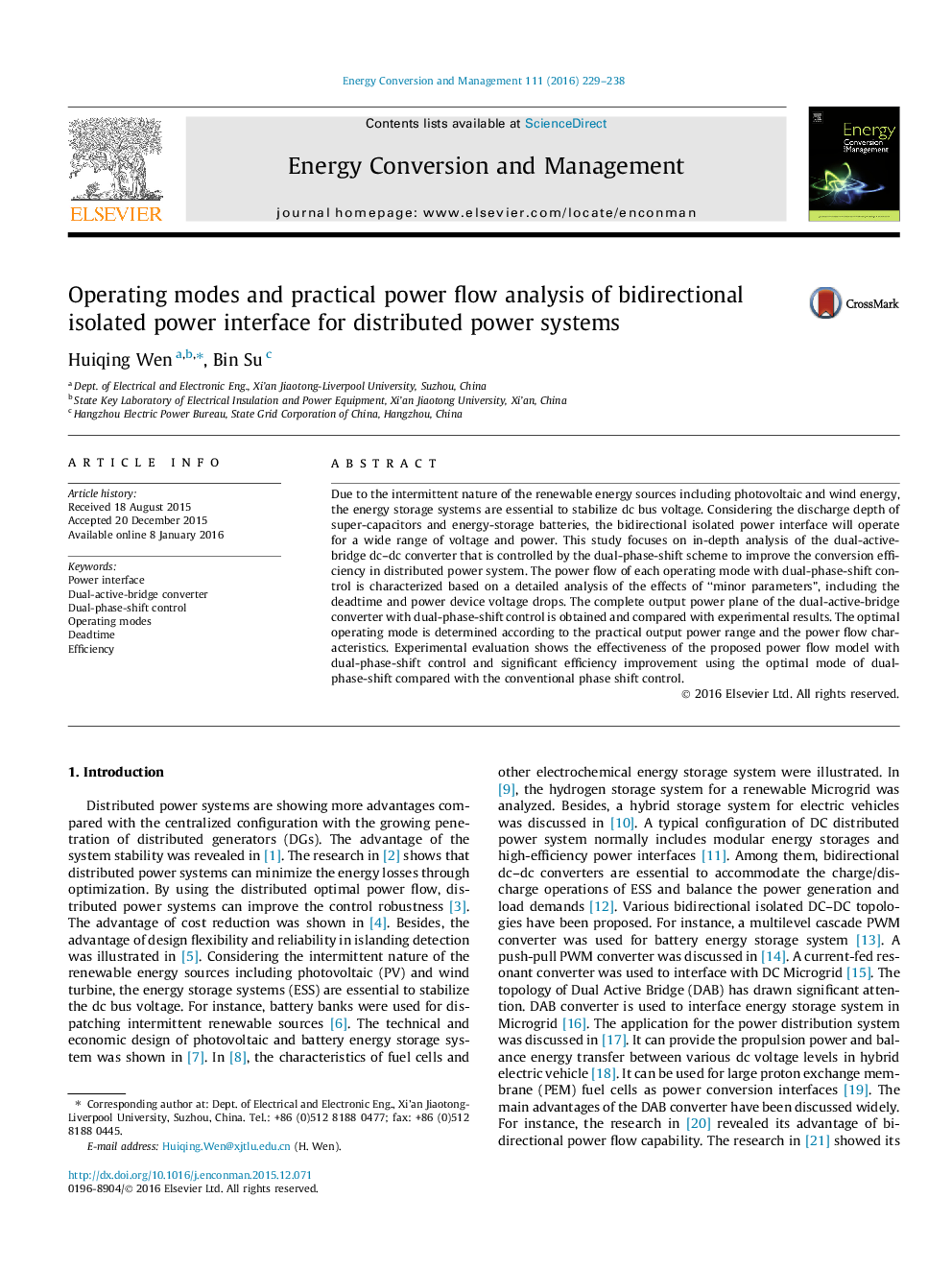| Article ID | Journal | Published Year | Pages | File Type |
|---|---|---|---|---|
| 771520 | Energy Conversion and Management | 2016 | 10 Pages |
•Four operating modes of Dual-Phase-Shift control for Dual Active Bridge converter are presented.•Effects of “minor parameters” such as the deadtime and power device voltage drops are analyzed.•Accurate power flow models with Dual-Phase-Shift control are developed and verified with experimental results.•Optimal operating mode is determined with respect to the efficiency improvement.•Measured efficiency of the Dual Active Bridge converter is improved up to 14%.
Due to the intermittent nature of the renewable energy sources including photovoltaic and wind energy, the energy storage systems are essential to stabilize dc bus voltage. Considering the discharge depth of super-capacitors and energy-storage batteries, the bidirectional isolated power interface will operate for a wide range of voltage and power. This study focuses on in-depth analysis of the dual-active-bridge dc–dc converter that is controlled by the dual-phase-shift scheme to improve the conversion efficiency in distributed power system. The power flow of each operating mode with dual-phase-shift control is characterized based on a detailed analysis of the effects of “minor parameters”, including the deadtime and power device voltage drops. The complete output power plane of the dual-active-bridge converter with dual-phase-shift control is obtained and compared with experimental results. The optimal operating mode is determined according to the practical output power range and the power flow characteristics. Experimental evaluation shows the effectiveness of the proposed power flow model with dual-phase-shift control and significant efficiency improvement using the optimal mode of dual-phase-shift compared with the conventional phase shift control.
